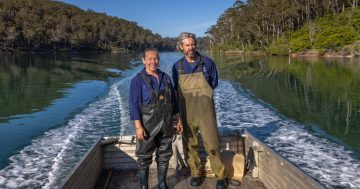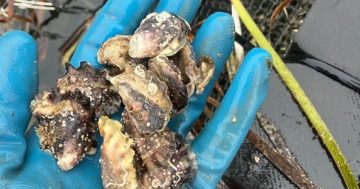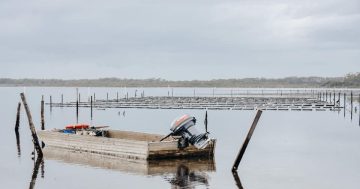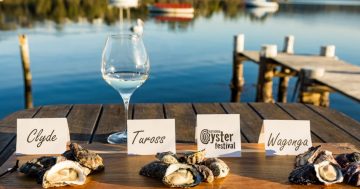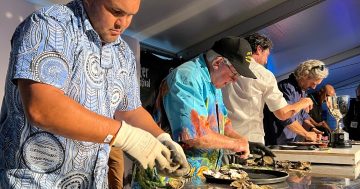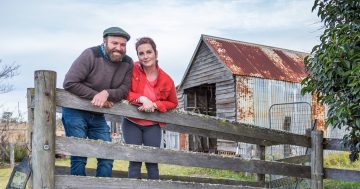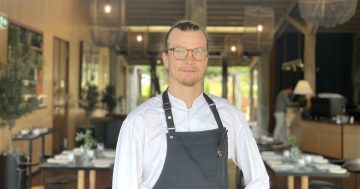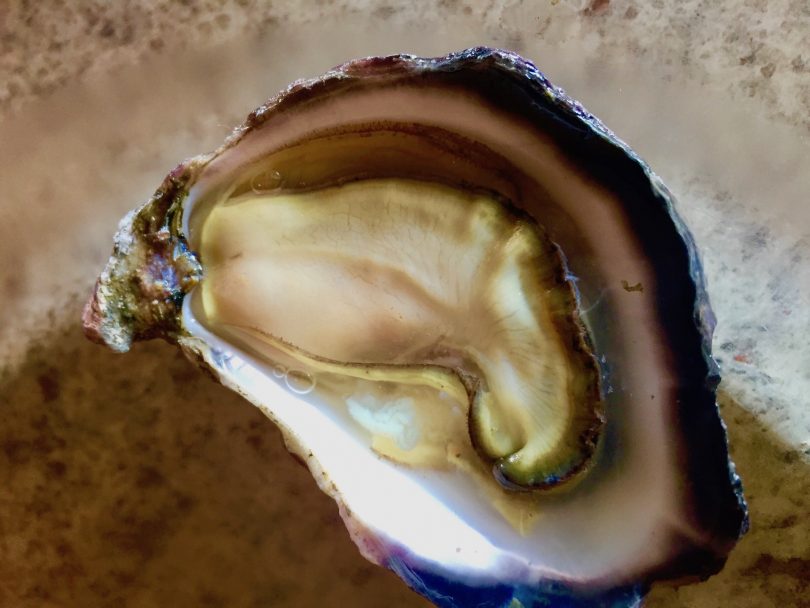
Always natural, the sweet Sydney Rock Oyster. Photos: Lisa Herbert.
Does everyone remember their first oyster or is it just me? One slurp and my senses opened with a loud heavenly refrain. Since then I have become a great advocate for excessive consumption of these absolutely natural, naked, undressed, freshly shucked molluscs at every given opportunity.
The track I am on is not for the faint-hearted. Lost somewhere among the spotted gums in Mimosa National Park I bottom-out on the way up the wooded ridge and again several times down the other side and I thank myself for the decision to borrow a friend’s 4WD. Nevertheless, I’m pretty excited to have been granted an audience with local oyster grower Gary Rodely and his son Sam, of Tathra Oysters.
I come to a stop as instructed on my secret map, and make my way to the shimmering water, which I can see glimpses of through the bush. He is there with a smile, the weather-faced oyster farmer and his son.
Originally a Riverina boy, Gary says “we came here in 1987, my wife Jo took some convincing, but we’ve done ok”.
By ‘doing ok’, Gary might be referring to the 29 times they’ve won Australian Champion Oysters out of the 32 years they’ve been in business here, growing oysters in the estuarine waters of the Sapphire Coast.
These are, of course, Sydney Rock Oysters, endemic to the Australian coast from Hervey Bay in Queensland to the Victorian border.
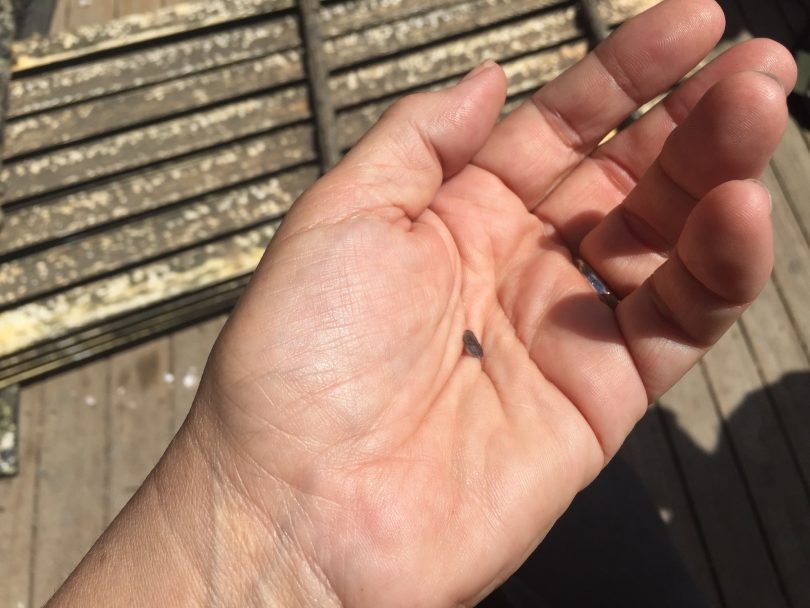
They’re not the cutest infants on a farm, but this little fella doesn’t realise how impressive he’ll become.
I look over the surrounding lagoon, enveloped by National Park, the silent, brackish waters perfect for catching and growing these sensationally sumptuous molluscs. All around us are rows of oyster beds, rising slowly out of the lowering tide, exposing cylindrical cages and other floating containers. Traditionally, each oyster farmer did things differently.
“Around 15 years ago, these ‘floating bags’ came along and made a huge difference to oyster farming in general, everyone’s adopted the floating bag.”
Gary begins to list the things he loves about this invention: “It floats on the top of the water and so, as filter feeders, the oysters gather food, solar benefit, warmth. They grow tremendously well in them.”
South Coast oysters are vulnerable to Winter mortality – a combination of viral cold, parasitic effect, “we have lost up to 50 per cent in the past”, Gary tells me, “now with the bags we have zero per cent loss”.
“We are now combining these floating bags with the rotating cylinders, which have traditionally given the Sydney Rocks their desirable cup shape due to the constant rolling movement. It’s the best of both worlds.
“As wine reflects its terroir, it is said that oysters reflect their merroir, the marine environment in which they are grown. Sydney Easter Show Judge John Susman has said of the Sydney Rock Oyster that ‘it has a complexity and depth that is way more interesting than the singular characteristics often displayed in Pacific and angasi (native) oysters.”
I ask Gary what’s so amazing about his oysters?
“I think it’s this place,” he says motioning over the brackish waters around us. “Our oysters are very sweet, which is a Sydney Rock thing, but just look at this place …”
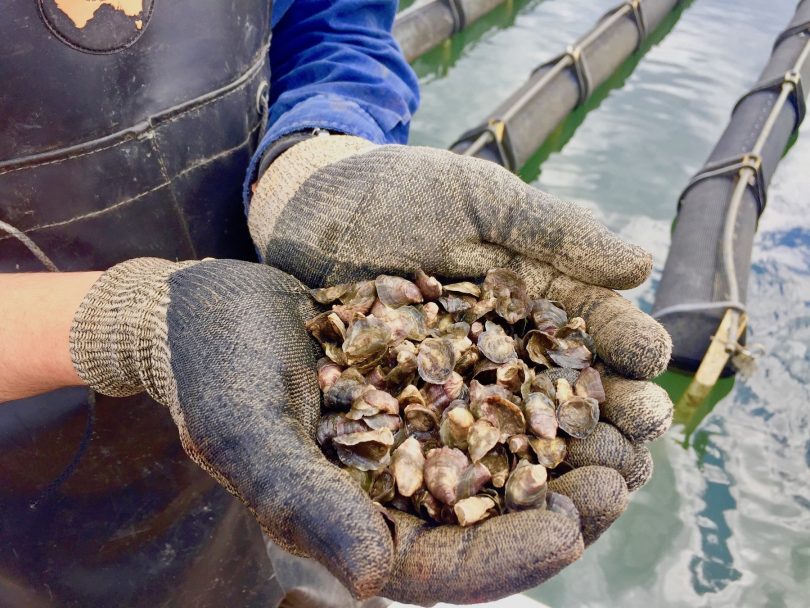
Handfuls of baby oysters, encouraged and mollycoddled along to fatness.
Life Cycle of the South Coast Oyster
The oysters in this microclimate all spawn at the one time, when the water is warm. They fatten up over Christmas, and spawning is usually triggered by an event like heavy rainfall. However, if it’s not raining and hasn’t for a while, they may all decide on another trigger to spawn (tide, wind). Given these events, the Rodely’s farm can have 2 to 3 spawning events a season.
These clever little bivalves change from male to female during their lifetime, and at spawning release sperm and eggs into the waters where fertilisation occurs and larvae develop.
“We then catch the larvae. After 21 days the little creature has grown a foot that can attach itself to our ‘catching sticks’. After around eight months the little babies are ‘flexed’ off these sticks. They then go into our oyster nursery where we watch and nurture them very closely,” Gary explains.
Every year, three-to-five times a year, the juveniles are handled and graded. Once they get past one year, they can double in size annually. Before that, it’s more sporadic.
“There are slow-growing and fast-growing oysters. We separate them out,” Sam tells me.
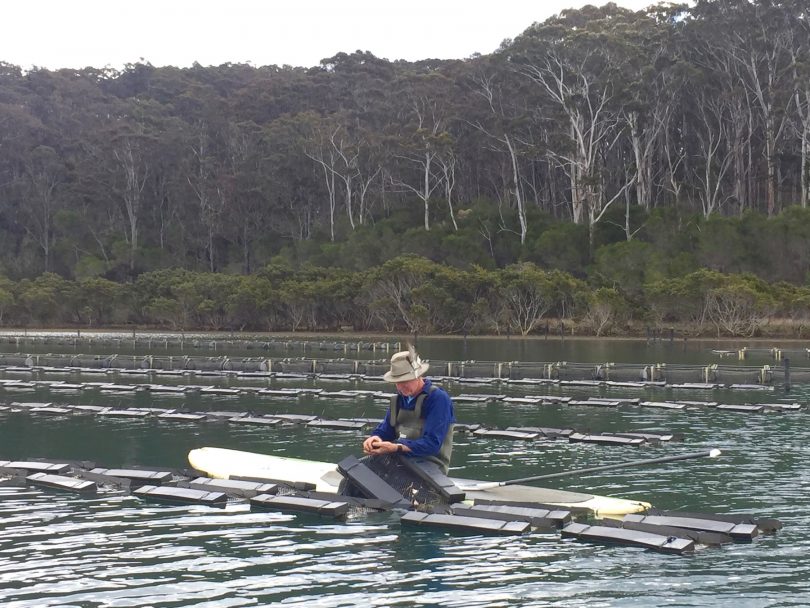
Husbandry of a singular kind, Gary Rodely tends his flock.
Seven days a week, Gary and Sam are out on the farm, on boards and boats, watching and checking and testing their stock and the waters. Then, after three-to-four years, when the oysters are ready for harvest, “we pull them into the boat and begin the sorting”.
The oysters are sorted by hand if they are being sent off unopened.
“Of course,” says Sam “if we are opening them we can sort as we go. We are feeling the weight of them, checking for a healthy frill; each one gets close inspection.”
They are then placed into foam boxes and are packed up to travel by road to restaurants and outlets far afield.
Many of these oysters are destined for the Rodely’s popular Tathra shop at the top of the town.
“The absolute thrill for us is seeing people’s reactions when they taste our oysters. We see it first hand, often right in front of us. The look on their faces … we know we’re producing something special.
“Often I meet people who they think they don’t like oysters! They always tell their story, and I’ve heard all the stories! ‘Maybe you do like oysters and you just don’t know it’ I tell them.”
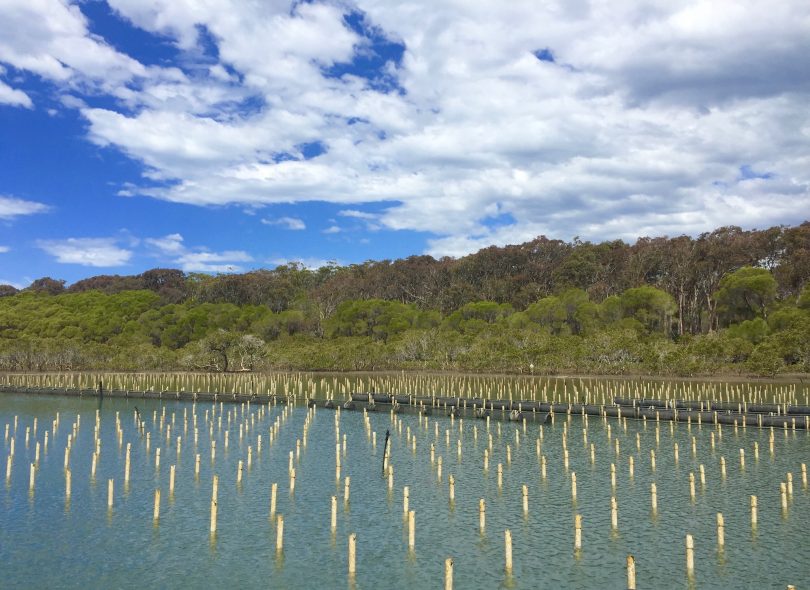
A sustainable industry by its very nature at Nelson Lake.
“I talk them into it. I love doing that. Talking the non-believers into trying.”
“So,” I ask Gary. “What’s your conversion rate?
Quick as a flash: “Eighty per cent!”
Then with a wink, he glides off on the company vehicle, an ancient SUP board, just a farmer checking his stock, rows of little jewels growing fat happily in the pristine waters of our glorious coast.
Original Article published by Lisa Herbert on About Regional.












